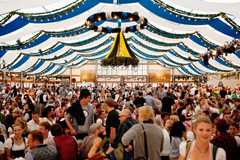Report / Munich
Brace yourself
In world where everyone seems to dress the same something rather special is stirring in Bavaria, where young men are rediscovering the joys of lederhosen and women the upfront joys of the dirndl.
It’s the last Saturday at Munich’s Oktoberfest and the atmosphere in the Herzkasperl beer tent is buoyant. The tent’s hundred or so tables are filled with ruddy-faced Bavarians and one-litre jugs of foaming beer. But compared to the chaos on display elsewhere at the world’s largest folk festival, the situation is downright civilised. The Herzkasperl tent was opened five years ago as an alternative to the raucous main tents, attracting a more mellow crowd of families and older couples and highlighting another recent change to the Oktoberfest landscape: a renewed focus on traditional and often high-priced fashion.
The vast majority of visitors to the tent are dressed in tracht, as Bavaria’s traditional costume is known. It consists mainly of lederhosen – short leather trousers usually worn with braces – and farmer-style dresses called dirndls. Many visitors have poured hundreds of euros into personalising their outfits. Kristian Greite, a 38-year-old facility manager, spent about €1,000 on his unconventional look, which he assembled from different regional items. “There are the trachten-Nazis who want to keep everything the way it is,” he says. “But I think it’s more important to have fun.”
The Oktoberfest, or Wiesn as it’s more commonly known here, pumps approximately €1bn into Munich’s economy every year. About a quarter of that comes from food, transport and shopping, of which trachten is a large part. In response to a proliferation of cheap, foreign-made lederhosen and low-cut dirndls – the latter are on sale for as little as €29 near the tents – a growing number of Oktoberfest visitors have turned to upscale versions of the clothing in recent years, spurring the growth of an expanding luxury trachten market.
“People are spending real money on it now,” says Alexander Junker, the head of men’s trachten at Lodenfrey, a 150-year-old upscale clothing company and shop in central Munich. “It’s got to the point that grandfathers are paying €1,000 for their grandchild’s lederhosen.”
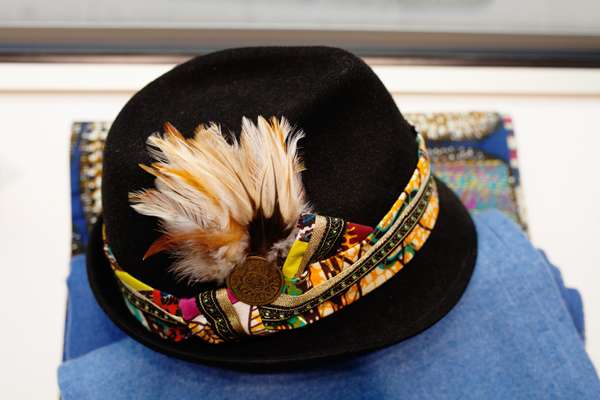

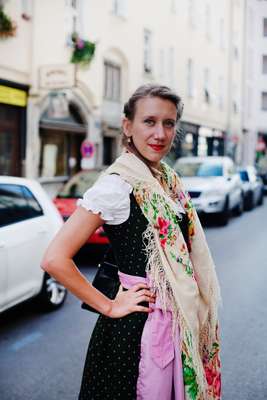
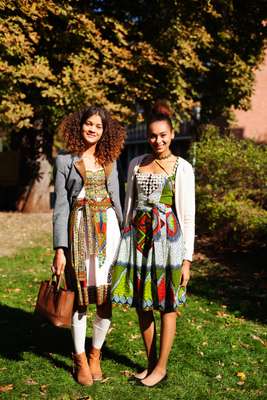
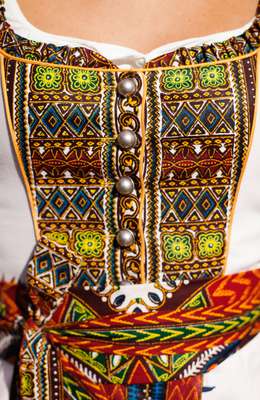
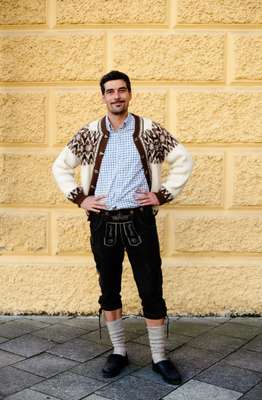
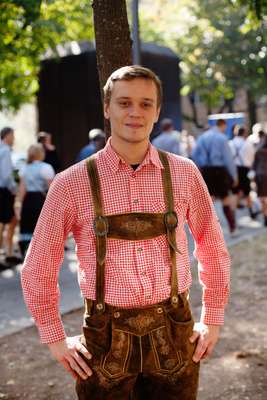
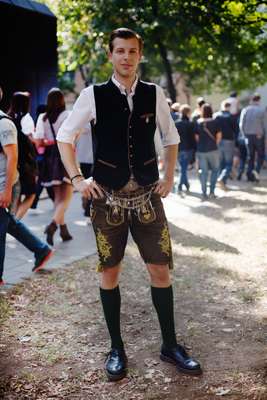
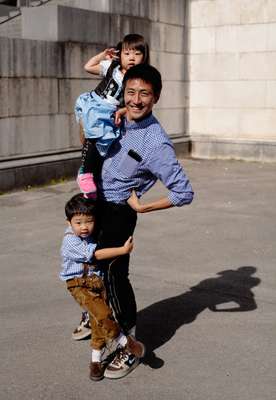
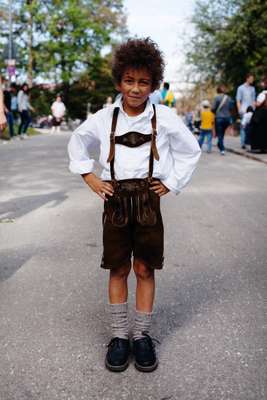
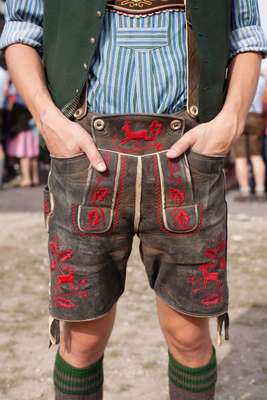
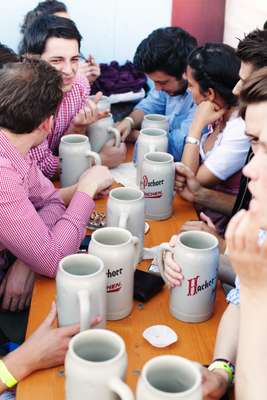
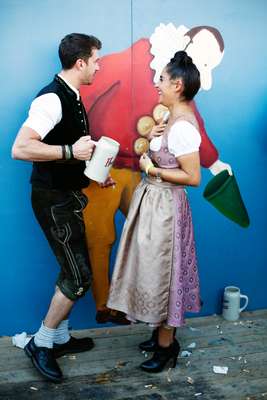
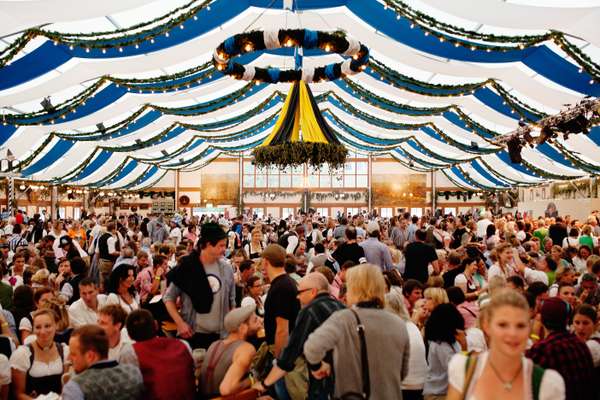
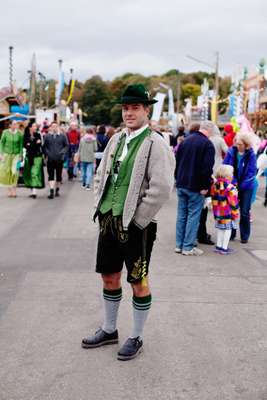
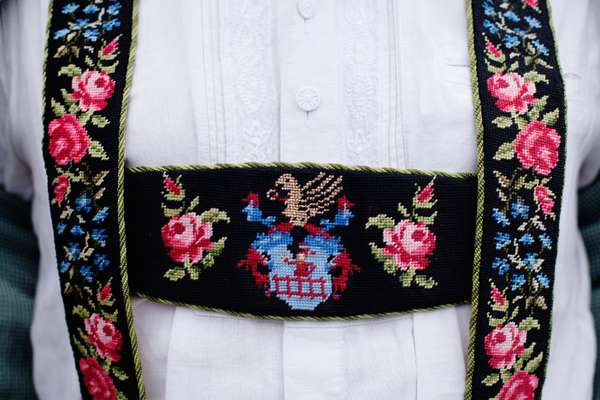

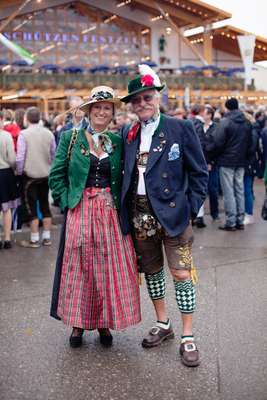
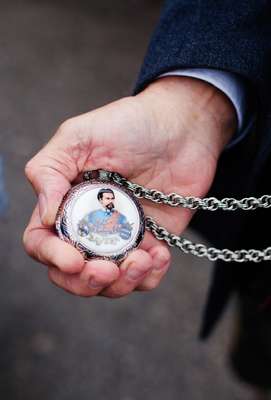
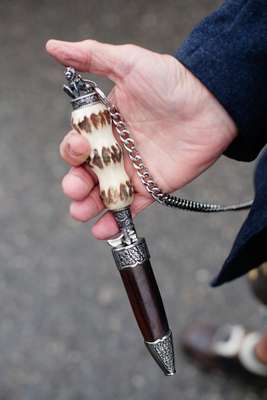
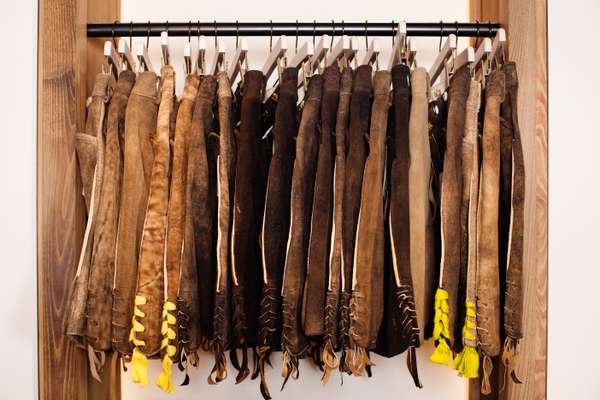

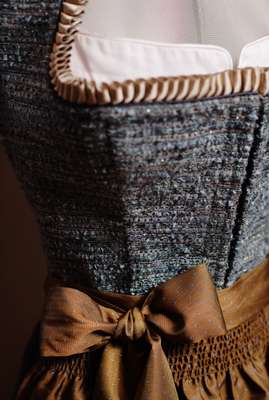
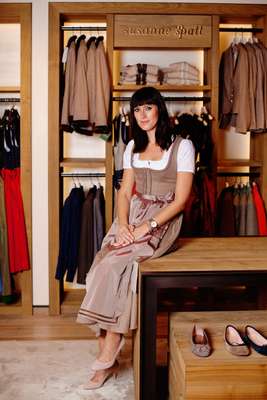
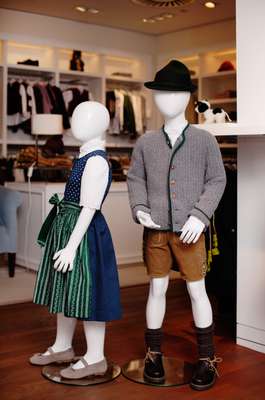
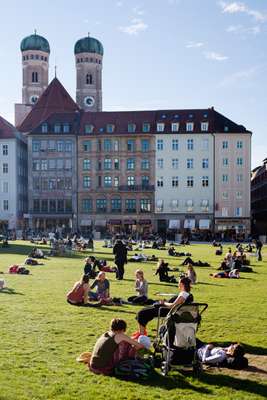
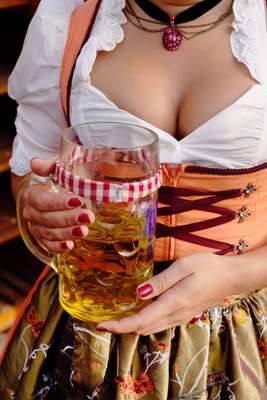
Lodenfrey focuses on the upper end of Oktoberfest fashion. On a recent Friday, Usain Bolt, the Jamaican Olympic gold medalist, was shepherded through the trachten department by a saleswoman as he talked on his mobile phone. Customers can easily spend more than €5,000 on an outfit here. A dirndl – such as an esoteric piece by Stajan with an image of Archduke John of Austria stitched onto the back – can cost as much as €2,400. “The style has overall become more traditional but combined with a more contemporary fashion fit,” says Johann Maurer, a seller in the lederhosen department. He adds that blue stitching, a colour once reserved for royalty, has been especially popular in recent years.
Many would argue that this combination of tradition and conspicuous consumption is typical of Bavaria, the state that is home to Munich. The politically conservative and historically Catholic state has long enjoyed a greater level of independence, visibility and affluence than the rest of Germany – a status that has drawn a mixture of resentment and jealousy from Hamburgers and Berliners. In other parts of Germany, few people could justify spending thousands of euros on an outfit that is worn only once a year. “We are on an island of the blessed,” says Gabriele Hammerschick, the head of Lodenfrey’s women’s trachten department.
Tracht in its current form was popularised not by farmers but by the Bavarian court. The royal family largely assembled it in the 19th century as a way of bolstering Bavarian national identity. In the following decades, it gradually filtered down to the city dwellers. The fondness for trachten among residents has ebbed and flowed over the years, dipping in the 1990s before returning forcefully in the past decade. This is likely to be the result of savvy marketing on behalf of low-end trachten manufacturers and, as many Wiesn visitors seem to think, the growth of global “hype” around Oktoberfest.
Bavaria has also been far more skilled at marketing itself to the outside world than any other German state; there’s a reason that most international stereotypes of Germany in fact come from Bavarian culture. Tracht plays a large role in that Bavarian brand. Many of the state’s politicians and public figures dress in lederhosen when they travel abroad, as do players for FC Bayern Munich, one of the world’s top football teams.
Oktoberfest’s international fame is now such that the majority of Lodenfrey’s customers are non-locals: their top foreign buyers are, in descending order, from Switzerland, the US, Italy and Australia. For Americans with German heritage it can be an opportunity to celebrate their origins. For others it can simply be an attempt to fit in. “Some of the Russian customers will leave their purchase in their hotel rooms when they depart,” says Maurer at Lodenfrey.
Many trachten garments are handmade and their creation feeds a small army of designers and manufacturers in the area. In recent years a number of these Munich designers have taken their own experimental approaches to the form. Some newer arrivals on the scene, such as Julia Trentini and Astrid Söll, have capitalised on a desire among younger Oktoberfest attendees to adopt a more individualised look – a change that Hammerschick at Lodenfrey ascribes to a growing individual-oriented zeitgeist. Trentini, whose shop is in Munich’s hip Glockenbachviertel district, combines traditional forms with more contemporary fabrics and colours.
Martin Jonas, the 37-year-old manager of the Herzkasperl tent, also takes a highly personal approach to his tracht. He works with a tailor to create unique pieces from unconventional fabrics, such as lederhosen made from cotton. Dressing up allows people to feel like they belong to Bavarian culture, he says, but that doesn’t mean it shouldn’t be taken too seriously.
“It’s important to remember that tracht always changes,” he says. “After all, it’s just an invention.”
Tartan army
By Hugo Macdonald
To say the kilt has a chequered past is more than just a bad pun. After the defeat of the Jacobites at Culloden in 1746, the English banned tartan in Scotland as a statement of oppressive cultural assimilation. It wasn’t until the 19th century when King George IV and later Queen Victoria fell in love with the Highland north that tartan national dress was born. As heir to the chiefship of the Macdonald clan I am loath to admit that my national dress is something of an invented tradition, exaggerated to meet the romantic expectations of England’s monarchs.
Strolling through Edinburgh you’d be forgiven for thinking tartan is at best a souvenir and at worst fancy dress. The kilts in fact belie an industry valued not long ago at £350m (€488m) per year with more than 200 businesses devoted to its cause. It is a big part of Scotland’s textile industry and the tartan kilt is its most recognisable ambassador.
I wear mine around the world; it speaks of heritage and belonging however invented it may be. There is a very real pride and at the same time humility associated with being part of something greater than oneself. And to answer a question I am often asked: yes, it is far more comfortable to wear a kilt with no underwear.
Tracht is back
Beer, big busts and men in tight leather shorts. What’s not to like about life in Bavaria? Just as those thin-lipped Scots will sneer at you for thinking that the kilt is little more than fancy dress and a chance to go knicker-free, so Bavarians will also point out that every stitch and detail of their grab has some cultural significance but, let’s be frank, they know that it looks kind of hot too. Sorry, just being honest.
But the boom in all of this incredible Bavarian pageantry is also happening as Germany, like many European nations, starts a debate about what it actually means to be German. And perhaps at a time when that seems to be increasingly fluid, holding on tight to not just a German but a regional identity gains more appeal. That’s not to say that it’s exclusionary, indeed the opposite; it’s a way of saying here’s how you become one of us. It’s a way of bonding and belonging. And you can become a part of their gang even if you are in town for only a few weeks for Oktoberfest (although, let’s be honest, they may smirk slightly at your bargain-bucket outfit).
So raise your glasses, grab a bratwurst and make the most of the legitimate opportunity to dress like an extra from a sexier version of The Sound of Music.

